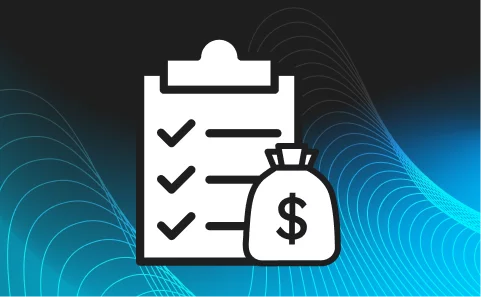Blog
What Institutional LPs Expect from Fund K-1 Reports-A Checklist

BY Scott Turner
April 24
What Institutional LPs Expect from Fund K-1 Reports. A Checklist.
Institutional limited partners (LPs) view Schedule K-1 delivery not merely as a compliance task but as a key touchpoint that reflects a fund’s operational rigor and commitment to transparency. The following checklist outlines core expectations—and best practices for exceeding them—so that your K-1 reporting strengthens LP relationships rather than testing them.
Why K-1 Delivery Is a Key Investor Touchpoint
- It’s not just a tax document—it’s a reflection of operational excellence.
“Financial reporting is a communication exercise and not just a compliance exercise,” emphasized SEC Chief Accountant Paul Munter at the 2023 AICPA & CIMA Conference—underscoring that clear, reliable reports build investor trust and confidence Deloitte Dart.
- Late or incorrect K-1s erode trust.
When LPs receive K-1s past expected timelines or contain errors, they face filing extensions, amended returns, and heightened audit risk. Swift, accurate delivery signals that your fund values their priorities and deadlines.
LP Reporting Expectations: The Core Checklist
Timely delivery (well before the April deadline).
Under IRC §6031(b), calendar-year partnerships generally must furnish Schedules K-1 to partners by March 15; delays can trigger partner-level penalties under IRC §6672 IRS.
Accurate allocations tied to capital account entries.
The Treasury Inspector General for Tax Administration found that items subject to some information reporting—like partnership income—have a 19 percent misreporting rate, highlighting the cost of allocation errors tigta.gov.
Clear formatting and partner-specific details.
ILPA’s updated Reporting Template guidance stresses a standardized, transparent presentation—complete with capital account roll-forwards and fee disclosures—to enhance comparability and reduce ad-hoc requests ILPA.
Access via secure investor portal.
Modern LPs expect on-demand digital delivery through authenticated portals—enabling self-service downloads, audit-trail visibility, and immediate notifications.
Contact details for tax and fund support.
Every K-1 package should include clear contact points—email and phone—for tax inquiries and fund-operations questions, minimizing LP follow-ups and frustration.
Going Beyond the Basics: What Top Funds Do Differently
- Include explanatory summaries or allocation notes.
A brief narrative accompanying each K-1—explaining key line items, unusual allocations, or special elections—helps LPs interpret complex entries without constant back-and-forth.
- Provide access to historical K-1s and backup docs.
LPs conducting benchmarking or multi-year analysis appreciate portals that archive past K-1s alongside supporting schedules (e.g., depreciation schedules, catch-up waterfalls).
- Allow investors to download in multiple formats (PDF, CSV).
Enabling data exports in structured formats empowers LPs to integrate K-1 data directly into their tax-preparation systems or in-house analytics.
The Impact of Inaccurate or Late K-1s
Investor dissatisfaction and complaint risk.
LPs encountering repeated errors may escalate complaints to compliance or audit committees—straining GP-LP relationships.
Potential delays in investor tax filings.
A late K-1 can force an LP to file for an extension (Form 4868), increasing their administrative burden and potentially incurring extension-related fees.
Risk of amended returns and reputational damage.
Errors discovered post-filing often require LPs to file amended tax returns—undermining confidence in your fund’s data integrity and potentially tarnishing your brand.
How to Improve Your K-1 Reporting Process
- Start early: collaborate across fund operations and tax teams.
Kick off K-1 data collection in January—well ahead of year-end closing—to allow ample time for data validation.
- Automate capital account updates.
Rule-based engines that ingest contributions, distributions, and fee offsets reduce manual entry errors and accelerate roll-forward calculations.
- Run internal reviews and mock audits.
A partnership tax-filing checklist from RSM US recommends conducting “dry-run” filings and automating complex waterfall calculations to catch issues before the filing window tightens RSM US.
- Use feedback loops from previous LP cycles.
Survey your LPs after each cycle to identify pain points—then refine templates, workflows, and portal features accordingly.
- If part of your K-1 process includes receiving K-1s and extracting their data, consider K1 Aggregator® to automate intake workflows and integrate directly with your fund accounting system. Learn more at https://k1x.io/k1-aggregator/
See recommendation for Funds Producing K-1s below
Building Investor Trust Through Reporting Transparency
- Communicate in advance about timelines and formats.
Before year-end, share your K-1 delivery schedule and available data formats so LPs can plan their own filing processes.
- Offer proactive updates when delays occur.
If a bottleneck arises—such as late audit sign-offs—notify LPs immediately with a revised timeline and mitigation plan.
- Treat K-1 delivery like a branded, client-facing experience.
Invest in polished cover letters, concise explanatory decks, and intuitive portal interfaces to reinforce your commitment to service quality. Individuals and organizations tasked with generating and delivering K-1s to investors should explore K1 Creator® for a streamlined authoring, review, and e-delivery process. Learn more at https://k1x.io/k1-creator/
By aligning your K-1 reporting processes with these institutional LP expectations, you’ll elevate tax compliance from a back-office chore to a powerful driver of LP confidence and long-term relationships.
Footnotes
- Paul Munter, SEC Chief Accountant, remarks at the 2023 AICPA & CIMA Conference on Current SEC and PCAOB Developments, December 10, 2023 Deloitte Dart
- Partner’s Instructions for Schedule K-1 (Form 1065), IRS, April 2024, p. 1. URL: https://www.irs.gov/instructions/i1065sk1 IRS
- TIGTA, The Use of Schedule K-1 Data to Address Taxpayer Noncompliance (Report No. 2019-30-078), February 2022, p. 7. URL: https://www.tigta.gov/sites/default/files/reports/2022-02/201930078fr.pdf tigta.gov
- ILPA, Reporting Template Guidance, January 2025, p. 16. URL: https://ilpa.org/wp-content/uploads/2025/01/ILPA-Reporting-Template-v.-2.0-Suggested-Guidance.pdf ILPA
- RSM US, Partnership Tax Filing Checklist, 2024, p. 2. URL: https://rsmus.com/content/dam/rsm/insights/services/business-tax/partnership-tax-filing-checklist-data-requests-audits-complexity/Partnership-tax-filing-checklist.pdf RSM US